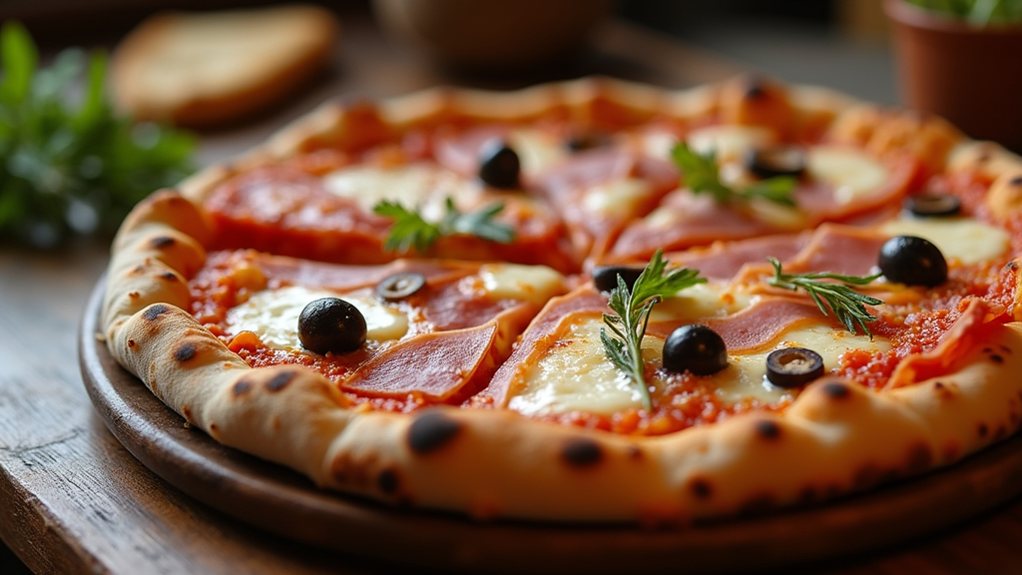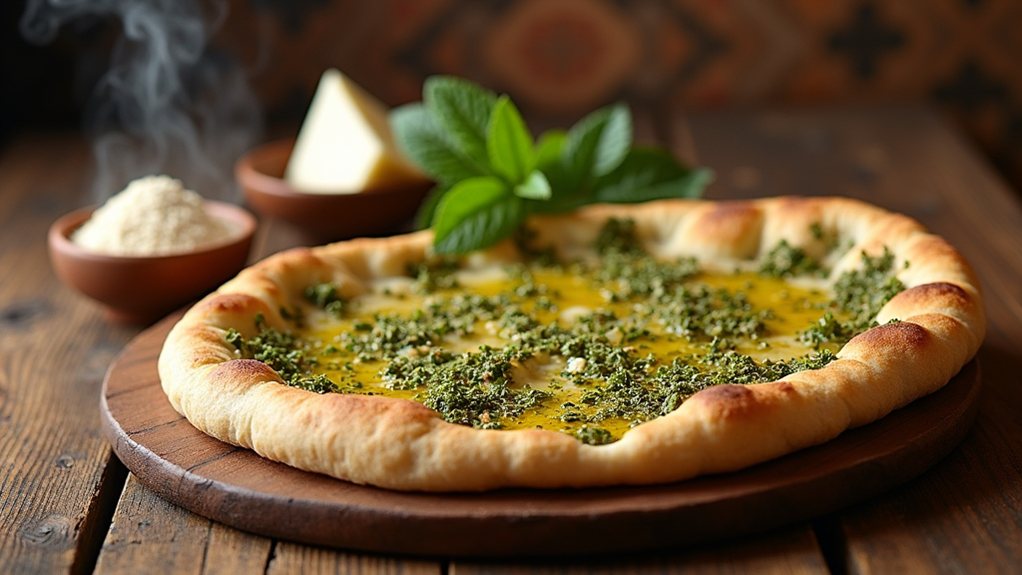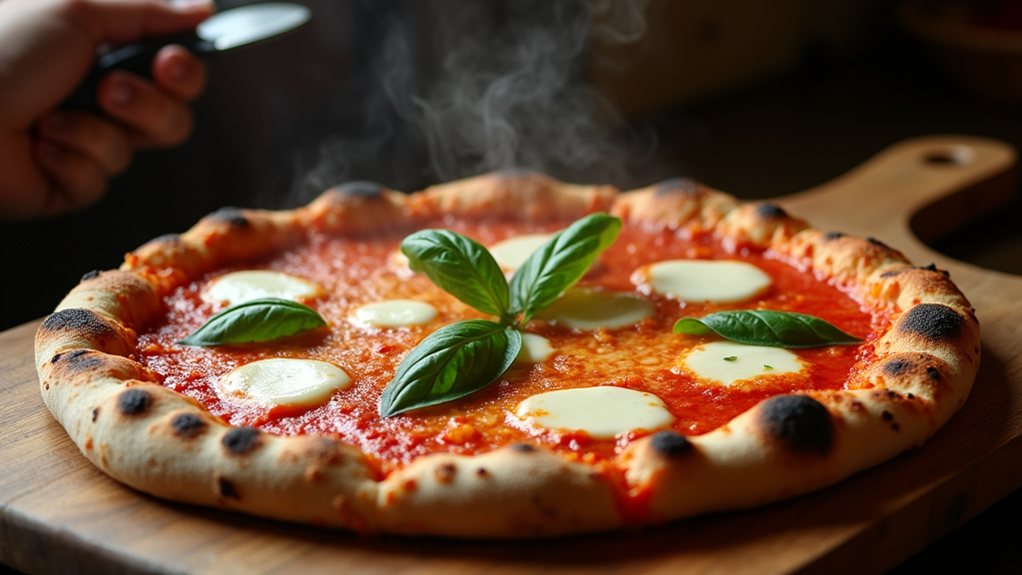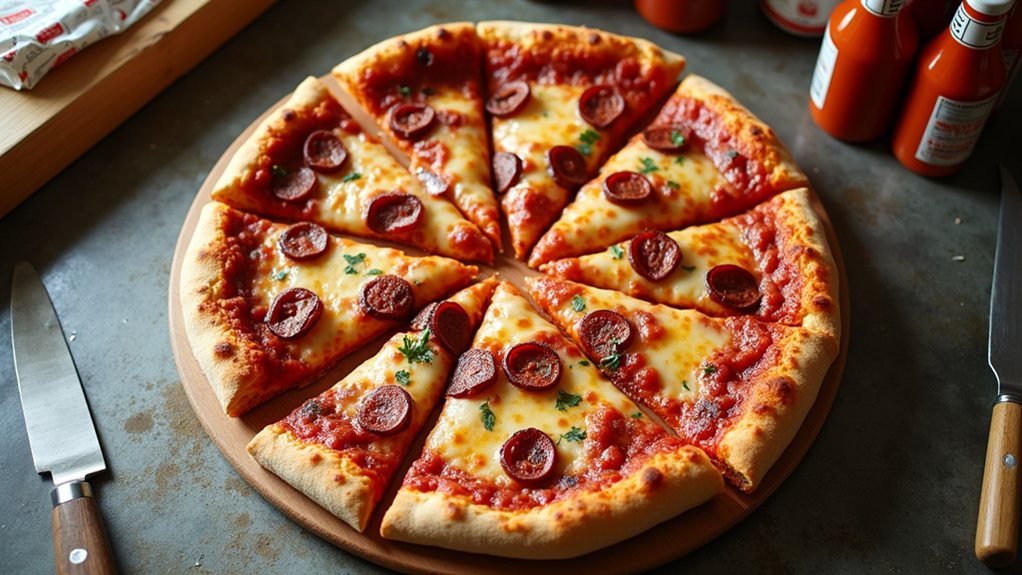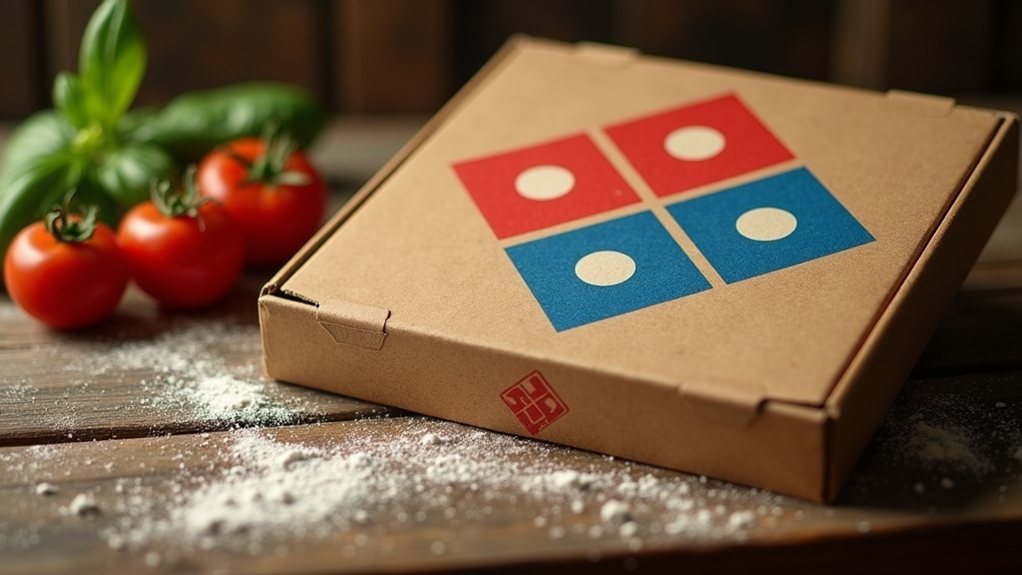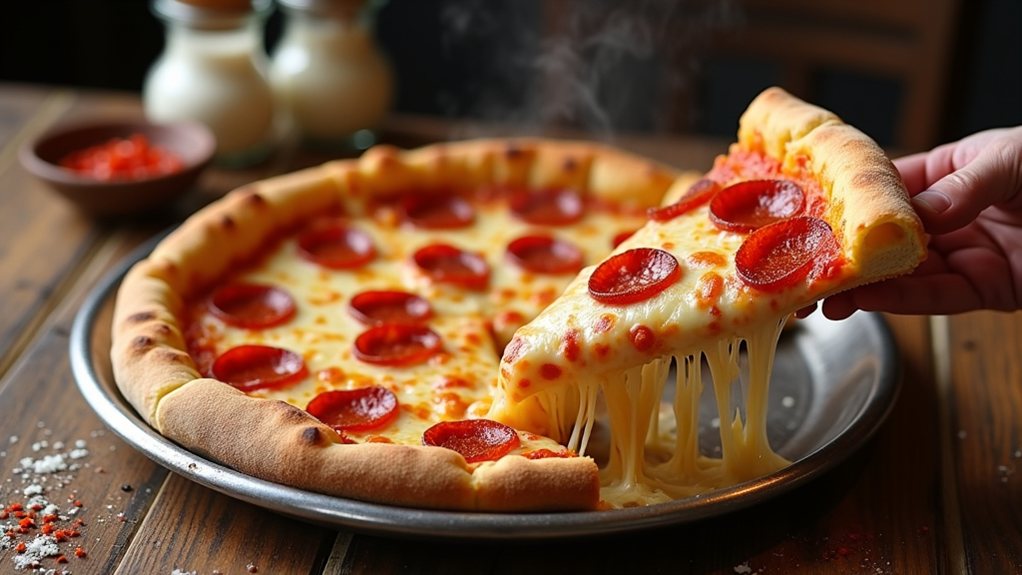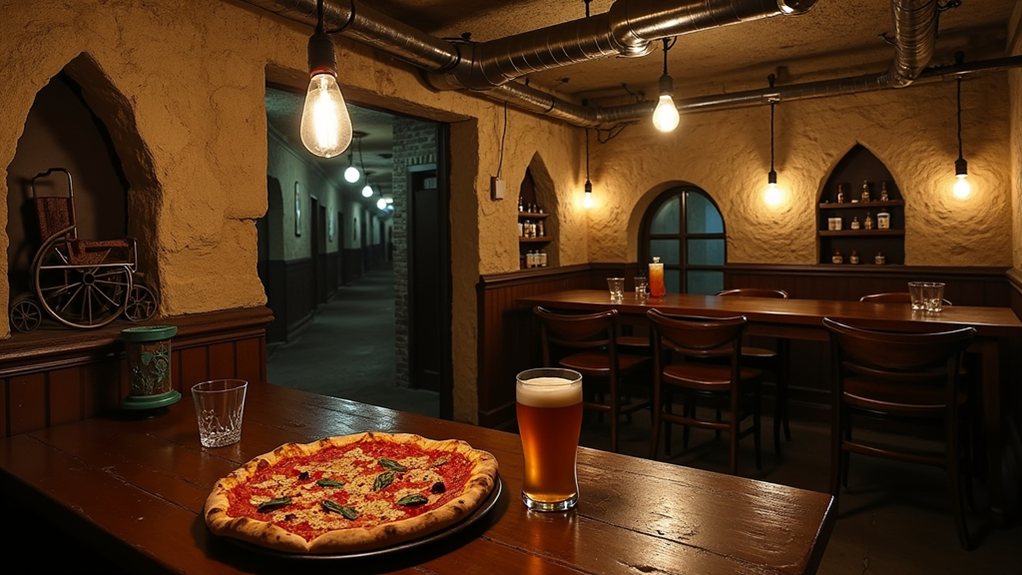American pizza presents a remarkable spectrum of regional styles, each telling stories of immigrant heritage and local innovation. From New York's foldable slices with thin, chewy crusts to Chicago's deep-dish marvels layered with toppings, these variations reflect distinct cultural influences. Detroit-style pizza, with its rectangular shape and caramelized edges, demonstrates how industrial history shapes culinary traditions. These different approaches to sauce, cheese, and crust thickness reveal how a seemingly simple dish evolves through generations of American creativity.
The Iconic New York-Style Pizza: History and Characteristics
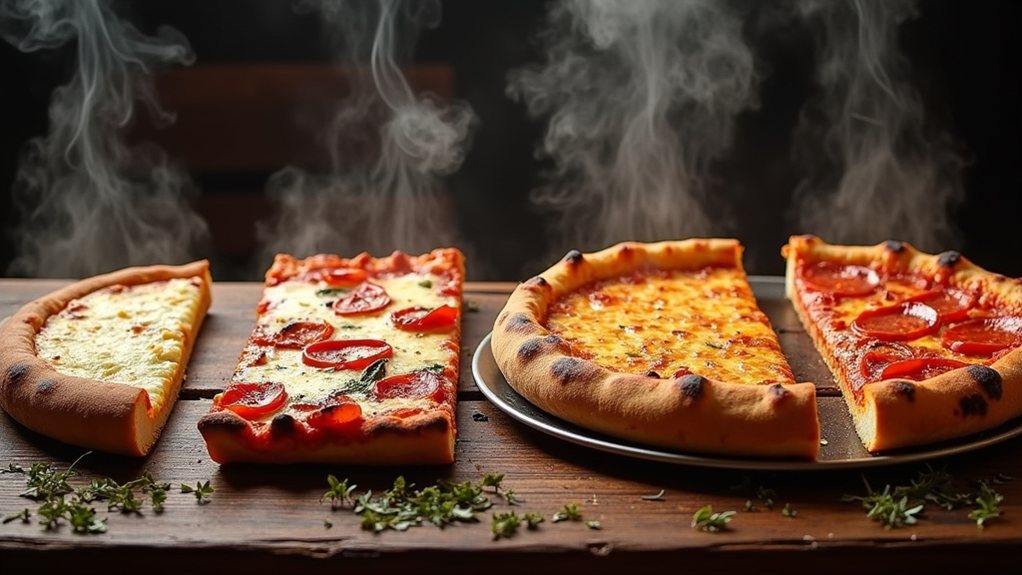
A slice of American history, the New York-style pizza stands as one of the most iconic culinary contributions to emerge from the melting pot of American cuisine. Its origins trace back to Italian immigrants, particularly Gennaro Lombardi, who adapted Neapolitan techniques to American ingredients in the early 20th century.
Distinguished by its thin, foldable crust made from high-gluten flour, New York pizza typically measures 16-20 inches in diameter and is cut into eight slices. The unique properties of NYC water contribute significantly to the distinctive texture and flavor of the crust that locals swear by. The coal-fired ovens, later replaced by gas and deck ovens cooking at approximately 570°F, create the perfect balance of crispy exterior and chewy interior.
The quintessential New York slice relies on engineering precision: thin yet strong crust, perfect temperature, and the science of foldability.
Low-moisture mozzarella and lightly seasoned tomato sauce complete the classic profile. The foldable crust allows New Yorkers to enjoy this delicious pizza on the go without sacrificing any of its rich flavor.
Beyond mere food, this portable, flexible slice represents New York's cultural identity, appearing in countless films and influencing pizza styles worldwide.
Chicago Deep Dish: A Hearty Midwestern Tradition
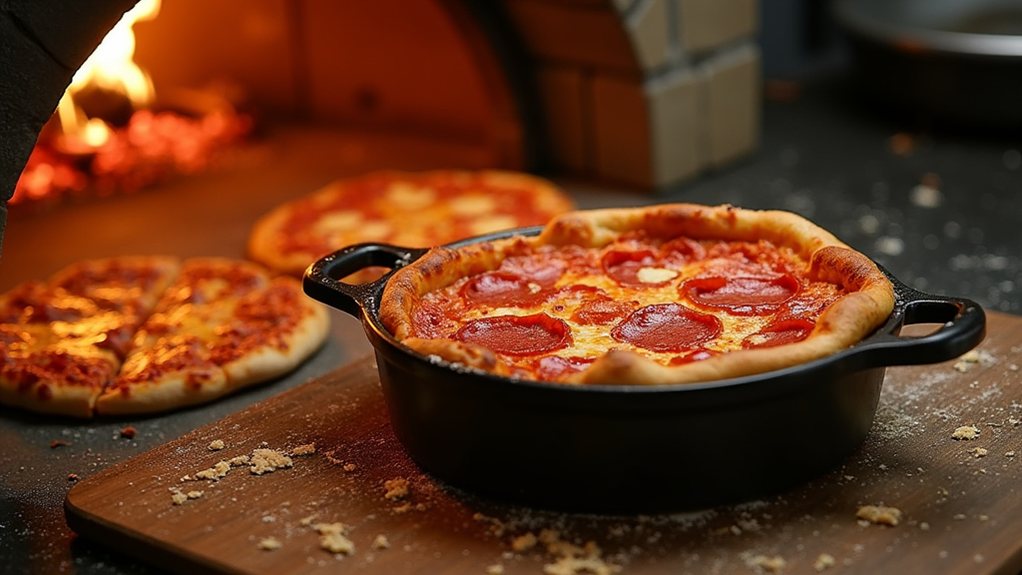
While New York's thin, foldable slices embody East Coast practicality, moving westward introduces us to an entirely different pizza philosophy.
Chicago's deep-dish pizza, born in 1943 at Pizzeria Uno through the vision of Ike Sewell and Ric Riccardo, stands as a monument to Midwestern heartiness.
This culinary icon features a thick, buttery crust that cradles layers arranged in reverse—cheese at the bottom, toppings in the middle, and sauce crowning the creation.
Baked in high-sided pans for nearly an hour, these substantial pies have evolved into diverse forms, including the "stuffed" variety with an additional layer of dough. The pizzas initially faced challenges due to their long cooking times, but eventually won over customers with their satisfying depth and abundance of ingredients.
This indulgent pizza style has become integral to tourism in Chicago, drawing visitors who specifically seek authentic deep-dish experiences.
While tourists flock to famous establishments like Lou Malnati's and Pequod's, locals often prefer the less-heralded tavern-style pizza, cut into squares for easier consumption.
Detroit-Style Pizza: From Automotive Pans to Culinary Fame
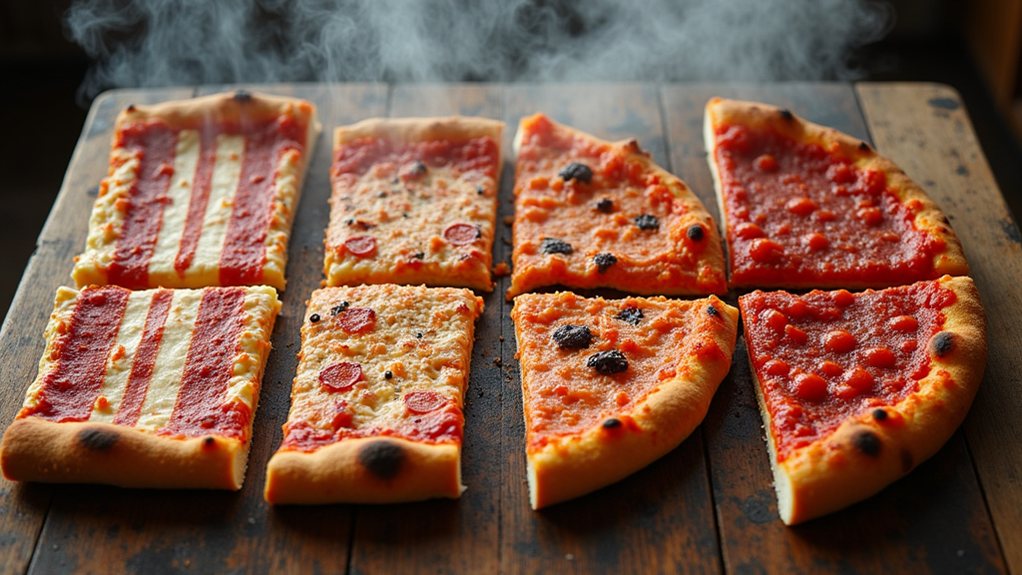
Motor City's celebrated contribution to America's pizza landscape emerged from an unlikely marriage of industrial resourcefulness and culinary creativity.
Born in 1946 at Buddy's Rendezvous, Detroit-style pizza initially used automotive drip trays as baking vessels, creating its signature rectangular shape and caramelized cheese edges.
Detroit's culinary ingenuity transformed automotive parts into pizza perfection, forever linking the Motor City's industrial and gastronomic heritage.
Though beloved locally for decades, it wasn't until the 2010s that this regional specialty gained national recognition. The style's popularity has grown dramatically, with Yelp reporting a 52% increase in reviews mentioning Detroit-style pizza by 2021.
What makes Detroit-style pizza distinctive:
- Square shape with thick, airy crust resembling focaccia
- Wisconsin brick cheese that extends to the edges, creating crispy, caramelized "FRICO" crowns
- Sauce applied in stripes on top after baking, creating the characteristic "red top"
This thick, rectangular crust offers a unique textural experience that distinguishes it from other American pizza styles.
This pizza style reflects Detroit's industrial heritage while demonstrating how automotive innovation unexpectedly influenced American culinary traditions.
California's Fresh Approach to Pizza Innovation

California's innovative approach to pizza stands in contrast to Detroit's industrial roots, offering a culinary expression that celebrates freshness and experimentation rather than tradition. This West Coast style welcomes local ingredients and creative combinations, with restaurants like California Pizza Kitchen leading the charge.
| Key Elements | Ingredients | Innovations |
|---|---|---|
| Artisanal crusts | Ancient grains & natural yeasts | Cold fermentation techniques |
| Unique toppings | Avocado, smoked salmon, BBQ chicken | Seasonal vegetable combinations |
| California cheeses | Local mozzarella & Hispanic varieties | Blended with specialty options |
| Cultural fusion | International flavors & spices | Health-conscious alternatives |
The California style continues to evolve through seasonal menu offerings and retail products, extending its influence beyond restaurant walls while maintaining its commitment to fresh ingredients and bold flavor combinations.
Regional Treasures: St. Louis and New England Greek Styles

Beyond the coastal culinary centers, America's heartland and northeastern regions have developed distinctive pizza traditions that remain beloved local treasures.
St. Louis-style pizza features a cracker-thin crust without yeast, topped with sweet tomato sauce and Provel cheese—a unique blend of cheddar, provolone, and Swiss developed in the 1950s. This regional specialty is famously cut into squares rather than triangular slices.
Meanwhile, New England Greek-style pizza offers its own cultural fusion with:
- Thicker, softer crusts that contrast with New York's thin slices
- Distinctive toppings like feta cheese and kalamata olives
- Strong connections to local Greek immigrant communities
Both styles showcase how America's pizza landscape welcomes regional identity, with recipes and techniques passed down through generations of family-owned establishments that stubbornly, and deliciously, resist nationwide standardization.
How Immigrant Traditions Shaped America's Pizza Landscape
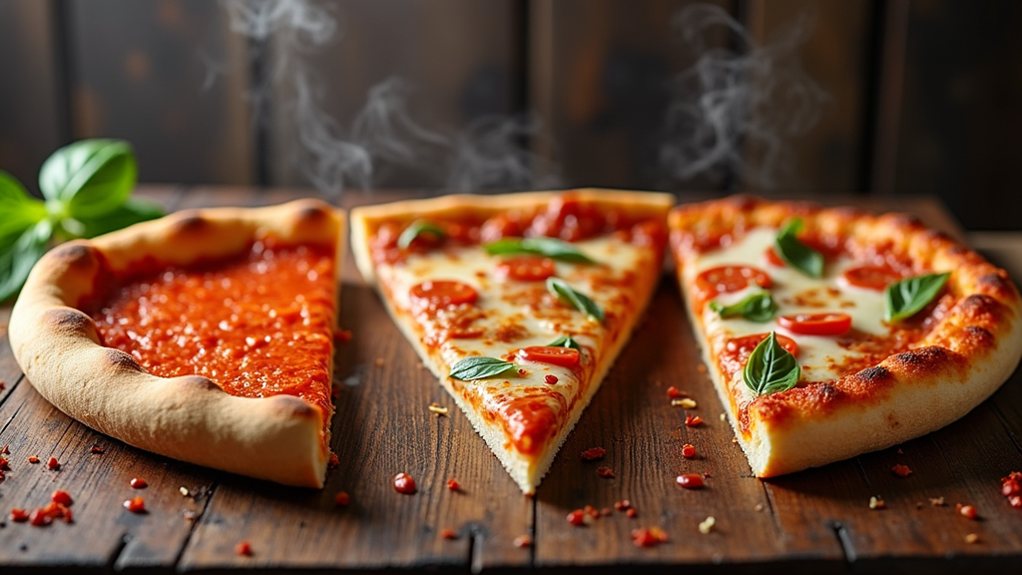
The story of American pizza begins with the waves of Italian immigrants who arrived on U.S. shores in the late 19th century, bringing with them culinary traditions that would transform the nation's food landscape. These newcomers introduced pizza in cities like New York, where traditional Neapolitan styles evolved to meet local tastes and preferences.
| Region | Style Characteristics | Cultural Influence |
|---|---|---|
| New York | Thin, foldable crust | Italian Neapolitan |
| Chicago | Deep-dish, hearty toppings | Midwestern heartiness |
| Detroit | Square shape, crispy edges | Sicilian traditions |
As immigrants established themselves in different regions, pizza adapted to local preferences while maintaining its Italian roots. This culinary evolution reflects broader patterns of immigrant integration, where food becomes a bridge between cultures. Today's regional pizza styles stand as delicious testimony to America's immigrant heritage.
FAQs
What's the Healthiest Pizza Style Among American Varieties?
New York-style pizza is generally healthiest among American varieties due to its thinner crust, which contains fewer calories and less fat than the thicker Chicago or Detroit styles.
How Do American Pizza Crusts Differ From Authentic Italian Ones?
American pizza crusts typically feature thicker, chewier textures with more ingredients like sugar and oil, while authentic Italian crusts remain thin, crisp, use Tipo "00" flour, and require longer fermentation times.
Which American Pizza Style Is Most Difficult to Make at Home?
Chicago deep-dish pizza presents the greatest home-cooking challenge, requiring specialized pans, precise layering techniques, and extended baking times to achieve its distinctive thick, multi-layered structure and properly cooked ingredients.
Are There Gluten-Free Versions of Regional American Pizza Styles?
Yes, numerous gluten-free versions of regional American pizza styles exist today. Detroit, New York, Chicago deep-dish, and California styles all have adaptations using alternative flours that maintain signature characteristics.
How Much Do Americans Spend Annually on Different Pizza Styles?
While specific spending by pizza style isn't precisely tracked, Americans spend approximately $38 billion annually on pizza in total, with New York-style thin crust capturing the largest market share due to widespread popularity.

